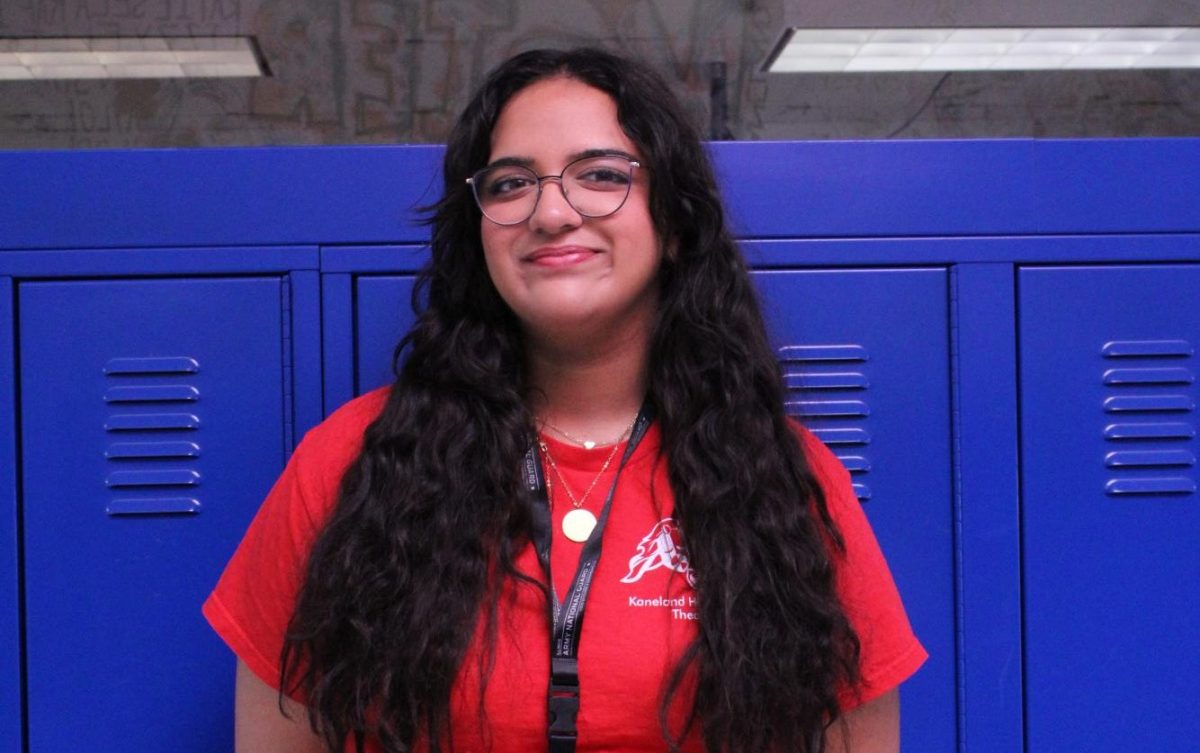A student’s life can be full of stress: getting enough sleep, earning good grades, making connections and participating in after-school activities. It can be tiring to deal with it all. So, when a student knows they have to get a ton of homework done before the next day on top of all of those other things, they may have an energy drink to get through it all productively.
“It’s like a ritual: I have to pound an energy drink and then do my homework,” sophomore Amanda Pham said.
Like Pham, many students at Kaneland and around the world are using energy drinks to be more productive for purposes like homework completion, focusing in class or energy boosts before workouts or practices. It’s common to see students walking around school with an energy drink in hand, and it’s also not hard to find outside of school. According to an article by the CDC, up to Photo by Veronica Van Dusen 50% of adolescents drink energy drinks.
It’s clear that energy drinks are certainly popular and are consumed by many teens, but they can also be dangerous.
While energy drinks aren’t bad if consumed in moderation, they can still be terrible if a teen drinks too much. For example, a study from the National Library of Medicine, which tested different caffeinated drinks on mice for 13 weeks, found that mice that had consumed energy and soft drinks had significantly more parenchymal IgG in the cortex and hippocampal formation. IgG is a very common antibody found in the bloodstream and body fluids. While it’s normal to have some in the brain (for the cortex and hippocampal formation), the amount is usually very low for a healthy brain. This means that consuming energy drinks can affect your blood-brain barrier, allowing more of the antibody (IgG) to leak through. This is very dangerous. According to another article by The National Library of Medicine, an influx of IgG getting through the blood-brain barrier can cause neuroinflammation, neuronal damage and degeneration, autoimmune attacks, disrupted brain function and epileptogenesis.
Keep in mind that these are only side effects that occur in teens who drink energy drinks frequently, but they are still dangerous. For example, they could affect your sleep or metabolism.
“I believe that sleep is so important, and energy drinks truly affect your sleep because they’re affecting your metabolism,” school psychologist Lauren Pivovar said. “They’re affecting the way that your body breaks down. It’s essentially a stimulant. When kids don’t understand caffeine content, they’ll be taking a lot of that caffeine intake late at night or first thing in the morning, and their sleep schedule is just off, and that’s not good.”
Teens should be cautious about when they decide to consume energy drinks and avoid doing so late at night, but sleep isn’t the only thing that gets affected. Junior Ava Dewig said that she gets very bad nosebleeds if she hasn’t had any sort of caffeine that morning. This could include energy drinks, but she also relies on caffeinated gum and soda, among other things. Dewig has mentioned that she has made attempts to stop completely, but they result in even worse nosebleeds, which is an example of one of the different withdrawal symptoms someone can face. For now, she aims to slow down her caffeine intake.
Dewig, like many other students, relies on energy drinks to get through the day, and over time, it has become a need, and some might even say an addiction. Dewig is also a student-athlete, like many here at Kaneland, and student-athletes are a target audience for energy drink companies. Those companies claim to be similar to sports drinks like Gatorade, Powerade and Electrolit, to name a few.
“Overall, they’re just dangerous,” Pivovar said. “They often market these drinks as if they’re like yummy fruity drinks, and so teens and young adults will consume lots of them without understanding what milligrams are and what caffeine is. And then they give you adverse side effects, like a racing heartbeat. All of the side effects are very similar to an anxiety or panic attack.”
While normal sports drinks are designed to hydrate and replenish the body’s energy, energy drinks flood an athlete’s system with caffeine. Sports require focus, but how can an athlete focus if they’re jittery and buzzing? An energy drink like Rockstar Energy Drink has 160 mg of caffeine per 16-oz can, and a regular Monster is the same, with 160mg. But the Java flavor Mean Bean has up to 300 mg. Although some of these numbers may seem small, according to several articles, the maximum amount of caffeine an adolescent should consume in a day is up to 100 mg. In contrast, a regular cup of coffee has95 mg of caffeine in it, which only matters for the sake of comparison if the energy drink has natural caffeine in it. This also highlights that just because something is sugar-free doesn’t mean it’s not as harmful. For example, a White Monster or Monster Energy Zero Ultra contains about 150 mg of caffeine.
“Caffeine is a diuretic, so it will dehydrate you,” CTE teacher Kirstin Murphy said. “If an athlete is drinking too much caffeine and not enough water, that can harm their body, their muscles, and their performance.”
It’s not just the caffeine that harms you, but energy drinks themselves that harm you. According to another study by the National Library of Medicine, which investigated cases of acute and chronic consequences of caffeine, they found that there are potentially fatal
repercussions to the consumption of energy drinks. These include “cardiac arrhythmias, neurological and behavioral changes, acute organ inflammation (including the liver, stomach, pancreas and kidneys), and even cases of rare dermatitis or autoimmune disorders.” There were multiple occasions of cardiac arrest in the reports, and even a few deaths that were possibly linked to energy drinks.
But there aren’t just negative side effects to energy drinks. They can always make a good occasional treat, as long as they aren’t relied on too much. This, however, still depends on the type of energy drink being consumed. In contrast, energy drinks could actually be beneficial to certain people with ADHD, according to an article by a journalist at Healthline Networks, Rachel Barclay. The caffeine in energy drinks can also increase the effects of ADHD medications like Adderall.
Although some people can find a way to healthily consume energy drinks, it’s not healthy for students to rely on them to get through the day and finish that last chunk of homework.
“I think [students] should just take a nap and then set the timer for like 20 minutes so you don’t get into the super deep REM sleep, just enough to refresh and then get going,” Murphy said. “Otherwise, you start getting into a really bad cycle of staying up too late. Then you’re tired and not functioning well during the school day.”
There are other ways to deal with an overconsumption of or addiction to energy drinks; all it takes is a bit of research, effort and perseverance.







